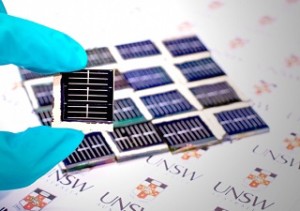Improvements in Solar PV Come in Many Dimensions

In the world of solar PV, one of the key issues is scale, i.e., the benefits that accrue to mass production. But, arguably, advancements in materials science, at least in the long-run, will be of even greater value.
Here’s an article about a new set of materials for solar PV, all of which are extremely abundant and non-toxic elements. From the article linked here:
Unlike its thin-film competitors, CZTS cells are made from abundant materials: copper, zinc, tin and sulphur. And CZTS has none of the toxicity problems of its two thin-film rivals, known as CdTe (cadmium-telluride) and CIGS (copper-indium-gallium-selenide). Cadmium and selenium are toxic at even tiny doses, while tellurium and indium are extremely rare.
The current efficiency is 7.6%, about one-third of the traditional approach to PV, but this figure will improve as R&D takes this further along.
News to celebrate as we move into the weekend.

Craig,
It’s certainly a cause for celebration when we witness improvements and breakthrough in developing technology.
Human ingenuity seems to recognize no bounds, but sadly not all of our creative genius is developed for good purpose, or used wisely. (As Alfred Nobel would attest).
Solar design and materiel compositions are being intensive researched by tens of thousands of scientists, engineers and chemist all over the planet. Likewise problems associated with storage and distribution are also being studied with equal dedication.
It’s certainly a cause for celebration to witness such activity.
We do indeed, live in interesting times !
Certain improvements in materials and in manufacturing processes will make PV solar power more economical. But even if PV systems were 100% efficient and practically free there would still be the problem of intermittency. Although people know that solar power is intermittent and that so far there is no practical way to store sufficient energy to make either solar PV or solar thermal, that problem is either ignored or it is assumed that energy storage systems will become practical.
At one time it was assumed that nuclear fusion would become practical. It still hasn’t happened. It could still happen and research is continuing, but it is entirely possible that it will never happen. Similarly huge energy storage systems capable of storing sufficient energy to last for weeks may never become practical. Thus, it is best not to count on them even while continuing research.
It has been said that one should not put all of one’s eggs into one basket and that one should not count one’s chickens before they hatch. That is excellent advice; we should follow it. Following that advice would, considering the consequences of global warming, require putting far more effort into R & D to develop superior nuclear power technologies and, while waiting for results of the R & D, to expand as rapidly as possible the best current nuclear technology. While that is being done, research should continue into developing practical and adequate energy storage technologies.